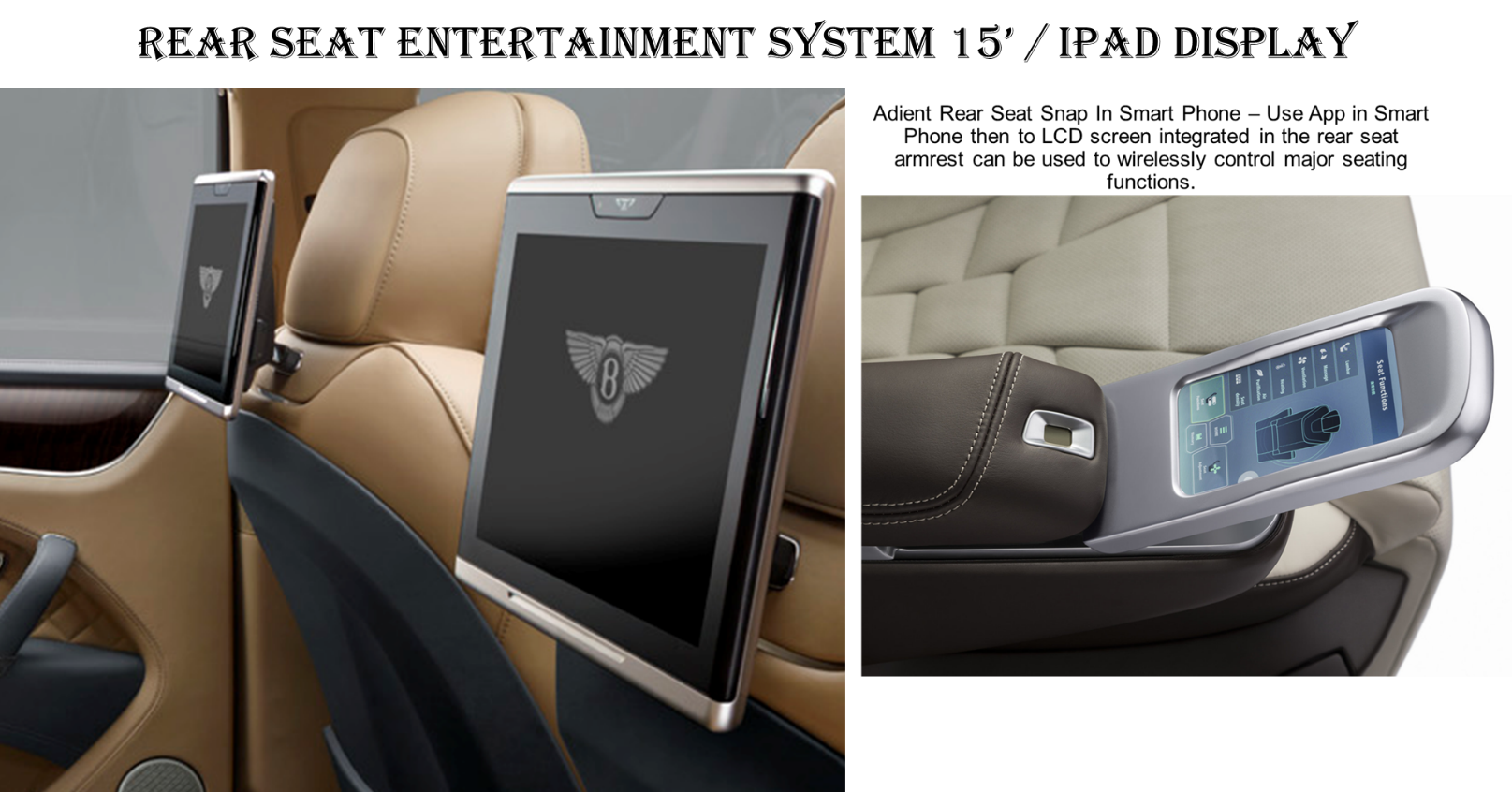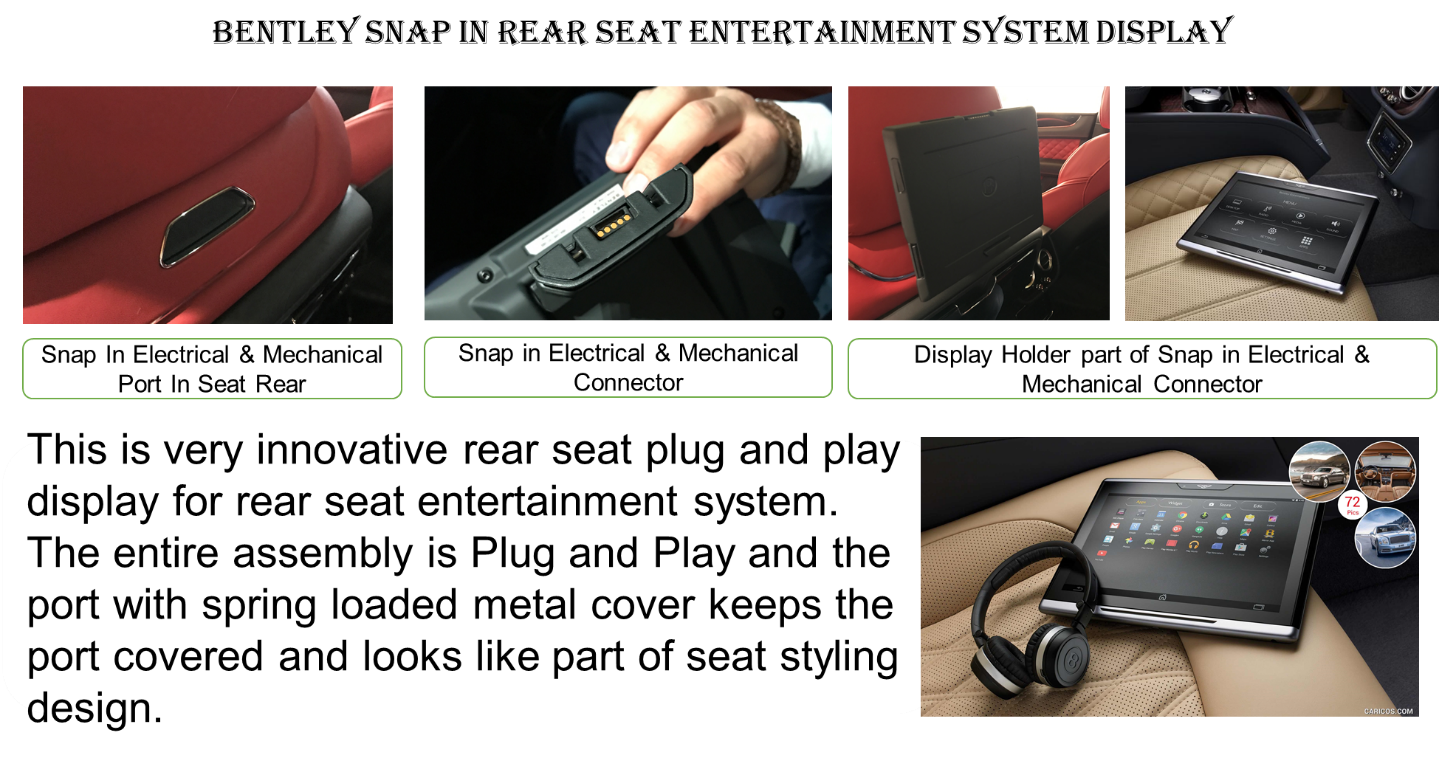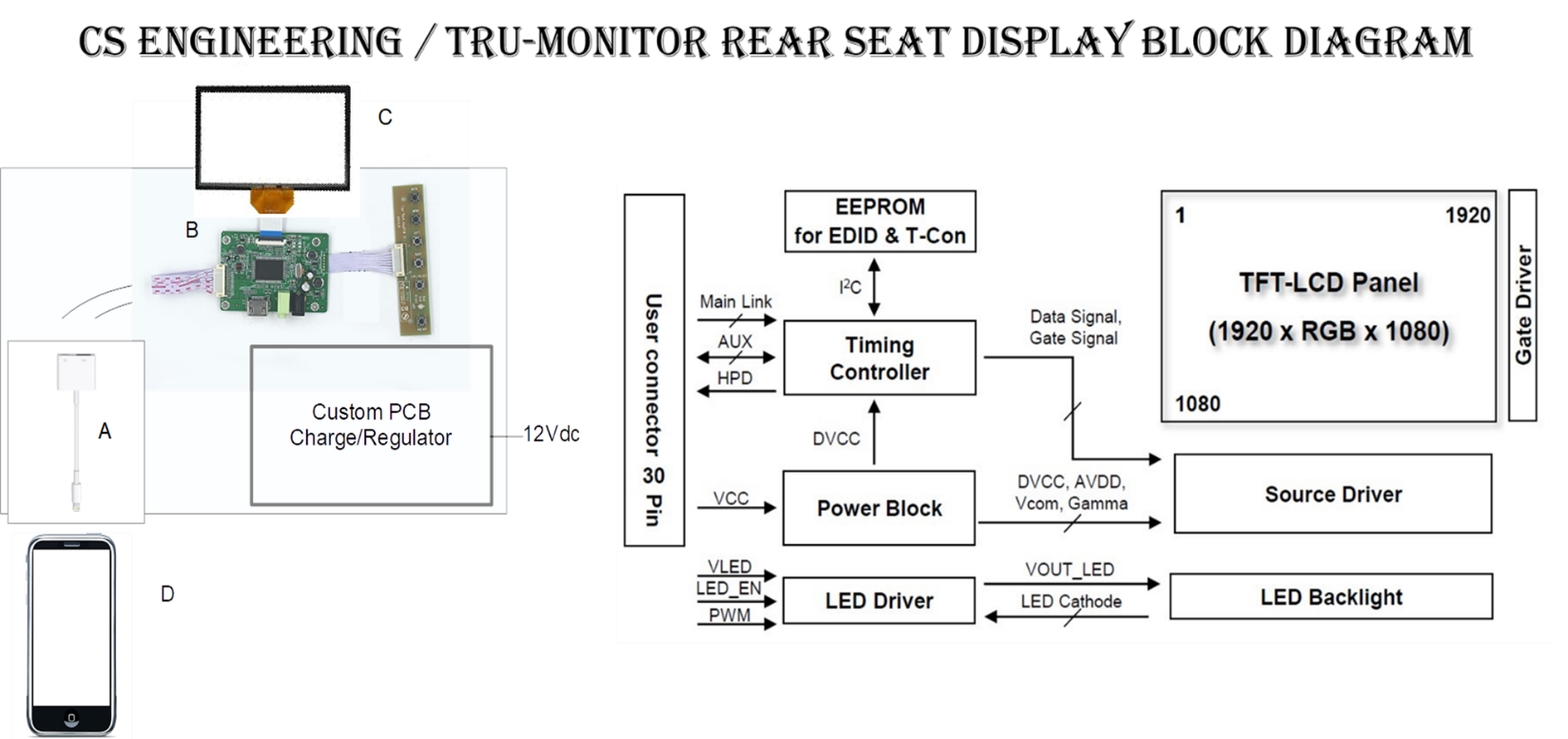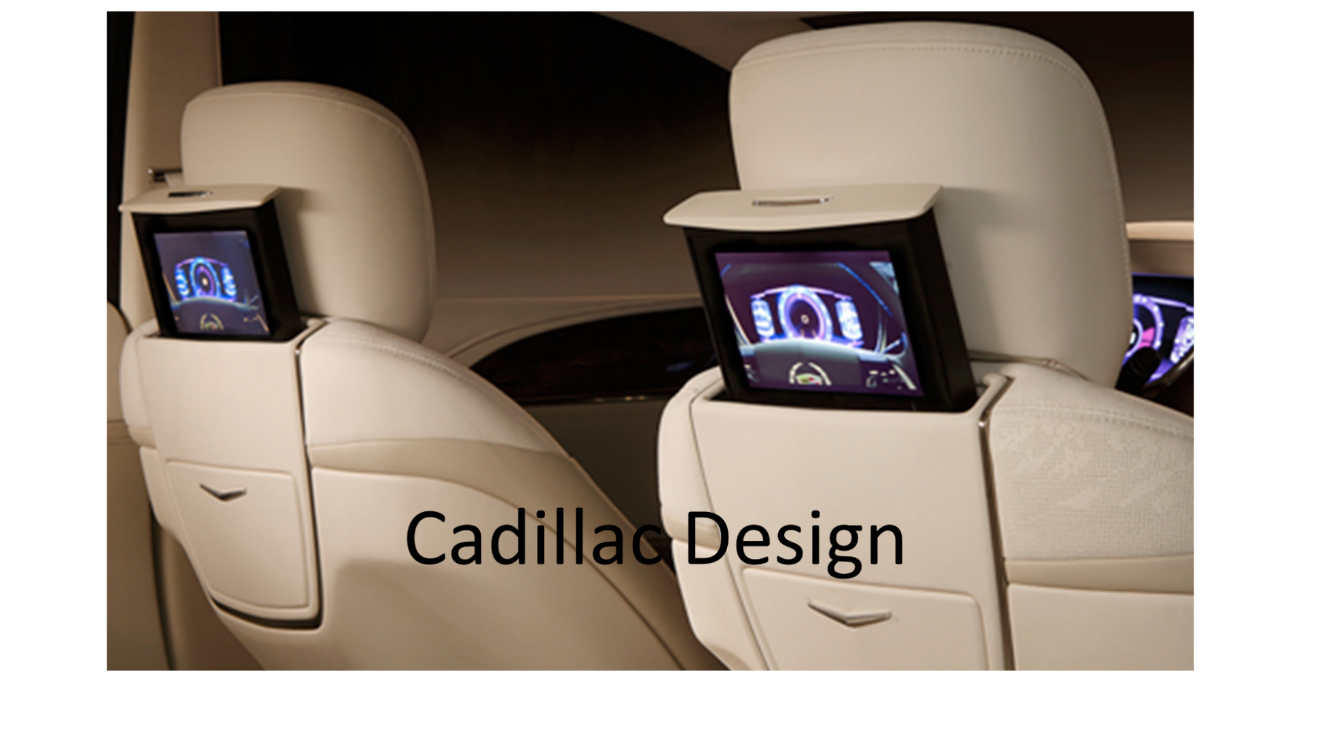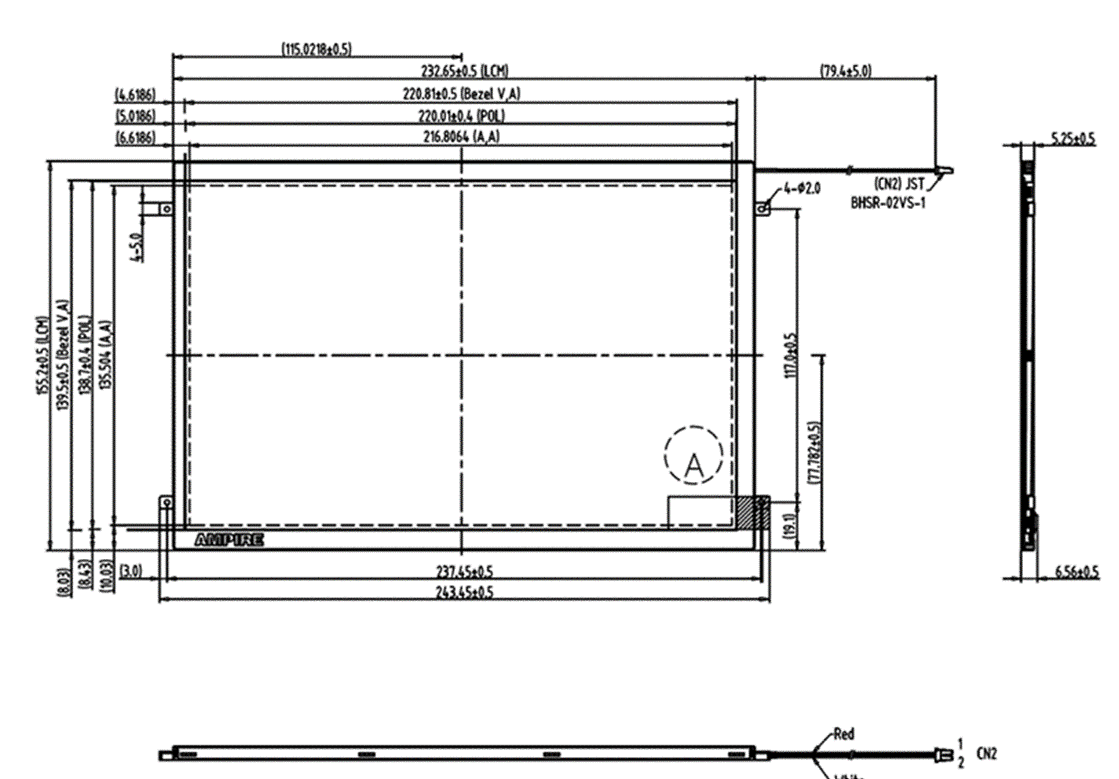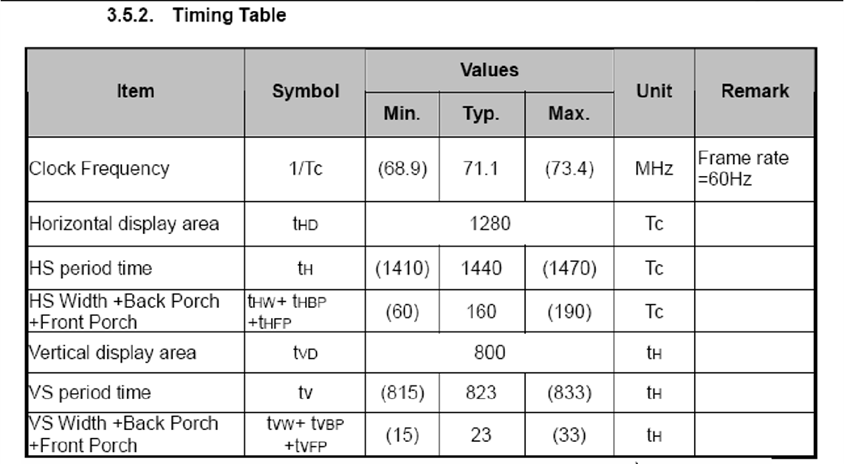Tru-Monitor Plug & Play Seat Rear Monitor – Ideal for People Movers / Other Vehicles
This is a plug-and-play monitor which auto-launches the Chromecast application when
+12V is applied to the rear power connector. The unit is housed in a rugged aluminum chassis and sports a rugged, chemically strengthened gorilla glass protecting the bright, full-high definition display inside. And because the monitor utilizes Chromecast technology, set up follows all Googles standard directions for set-up and video streaming. Streaming from iOS and Android cellphones, notebooks and laptops for any Chromecast-enabled app is quick and easy!
Few Ideal Applications are:
- Luxury bus seats.
- Recreational Vehicles.
- Long distance heavy trucks.
- Passenger train coaches.
- After market SUV’s.
- People movers like Uber / Lyft / others.
- 2022 MY Autonomous vehicles.
- Luxury car rear seats – for WEB Meetings / Information / Recreation.
- Camp sites.
- Hotel outdoor recreational areas.
For more information or application support please write to designhmi@gmail.com.
Design update on Wireless Seat Rear Display directly linked to Smart Phone.
TRu Monitors 15.7” monitor being designed has thickness of < 5 mm Block Diagram as below:
Updated 2D Drawing:
The AMP-HD15.6B9V2 is a Color Active Matrix Liquid Crystal Display with an integral LED backlight system. The matrix employs a-Si Thin Film Transistor as the active element. It is a transmissive type display operating in the normally black mode. This TFT-LCD has 15.6 inches diagonally measured active display area with FHD resolution (1920 horizontal by 1080 vertical pixel array). Each pixel is divided into Red, Green and Blue sub- pixels or dots which are arranged in vertical stripes. Gray scale or the brightness of the sub-pixel color is determined with a 6-bit gray scale signal for each dot, thus, presenting a palette of more than 262,144 colors.
Features
- High brightness display, 800nits.
- extra wide view angle
- LED backlight
- Long operation life
- RoHS Compliance
For more information contact designhmi@gmail.com or AMP Display Inc.
Audi and BMW are using tablets primarily designed to be used by backseat passengers to control various aspects of the car. They consider the tablets a way to replace clunky and outdated DVD-based rear-seat entertainment. The 10.2-inch Audi tablet even snaps into a seatback mount, while the 7-inch BMW tablet fits into a charging dock between the back seats.
People in the minivan set are willing to buy Velcro straps and hook something onto the back of the headrest.
Five years after MyFord Touch and Cadillac CUE were introduced, automakers still struggle with how to merge the smartphone with the dashboard. But now Apple CarPlay and Google Android Auto have stepped in to provide a solution by projecting familiar apps and the UI of the companies’ respective operating systems onto a vehicle’s in-dash display.
Design uses off the shelf video converters and small custom PCB to handle Charging and miscellaneous functions. iPhone accessories require joining the Apple MFi program. Use of “off the shelf” approved components.
- Item A: Apple Lightning Digital AV Adapter – Lightning to HDMI adapter
- Item B: HDMI to eDP development Board
- Item C: Model: AMP-HD15.6B9V2 (15.6” Full HD Color TFT-LCD module)
- Item D: iPhone 6s
Microchip Design Block Diagram for Smart Rear Seat Arm Rest
Below is the Cadillac design which clearly projects luxury and quality performance.
Panasonic Avionics’ Jazz Seat concept is what looking to integrate into rear seat infotainment systems. Ideally will work through cloud without carrying around heavy hardware. Would include apps allowing smart phone to be connected to larger 10.1” seat rear screen.
The target for Design HMI is to develop a 10” Display for rear seat infotainment that can be blue tooth connected to smart phone. Target is for the display to be extra thin (< 10 mm thick) so can be easily packaged in the rear seat.
HDMI and USB ports located in the rear seat center armrest.
Through vehicle subsystems can stream directly from internet or Apple TV.
Ports can be used to mirror device displays via the HDMI port or to play media stored on a drive.
10” articulating 10-inch-diagonal HD screens.
Can retract into the front seat backs when not in use.
Screens tilt to make viewing easier.
Gorilla glass that is shatter proof for obvious reasons.
The design working on is Color Active Matrix Liquid Crystal Display composed of a TFT LCD panel, a driver circuit. The screen format is intended to support the 16:10 WUXGA, 1920(H) x1200(V) screen and 16.7M colors (RGB 6-bits + Hi-FRC). All input signals are MIPI interface compatible.
- Screen Diagonal: 1 inch
- Active Area: 81 mm x 135.50 mm
- Pixel Format: 1920 (H) x RGB x 1200 (V)
- Pixel Pitch: 11292 mm (H) × 0.11292 mm (V)
- Pixel Arrangement: G.B. Vertical Stripe
- Display Mode: Normally Black (AHVA mode)
- White Luminance: 1000 cd /m2
- Contrast Ratio: 800:1
- Input Voltage: 3v
- Outline Dimensions: 243 mm x 155.2 mm (V)
- Thickness: 56 mm
- Support Color: 7M (6bit + HiFRC)
Functional Block Diagram:
Explanation of Feature Specifications:
- Screen Diagonal: The size of the monitor from corner to corner diagonally.
- Active Area: The size of the actual screen only.
- Pixel Format: (Also known as Resolution) the number of pixels (individual points of color) contained in the LCD, spread over a horizontal and vertical axis. Defines sharpness of image.
- Pixel Pitch: Specification that defines distance between each pixel.
- Pixel Arrangement: In which arrangement have the pixels been arranged.
- White Luminance: Also, known as brightness.
- Contrast Ratio: Ratio of luminance between the brightest color (white) and the darkest color (black) that the system can produce.
Dimensional Data:
Microchip and Design HMI Interface Protocol:
- Fully integrated smart-charging module in anodized aluminum body.
- Module can be standalone after-market or imbedded in Seat.
- Module Designed with 5 USB ports.
- One port connected to 12v power supply.
- Two Type A and two Type C USB ports.
- Power can be through dedicated 12v line embedded in seat or through power cord connected to rear seat power point.
- Type A and C USB ports to charge iPad and smart phone or charge & make smart phone the master and project on rear seat display.
- For charging provides DCP battery charge profiles such as BC1.2 DCP and Apple
- Screen Diagonal: 1 inch
- Active Area: 81 mm x 135.50 mm
- Resolution: 1280*3(RGB)*800 Pixels
- Pixel pitch (L*W): 1920 (H) x RGB x 1200 (V)
- Pixel Pitch: 0565*0.1695 mm
- Pixel Arrangement: G.B. Vertical Stripe
- Display Mode: Normally Black (AHVA mode)
- White Luminance: 1000 cd /m2
- Contrast Ratio: 800:1
- Input Voltage: 3v
- Outline Dimensions: 243 mm x 155.2 mm (V)
- Thickness: 56 mm
- Support Color: 7M (6bit + HiFRC)
Explanation of Feature Specifications:
- Screen Diagonal: The size of the monitor from corner to corner diagonally.
- Active Area: The size of the actual screen only.
- Pixel Format: (Also known as Resolution) the number of pixels (individual points of color) contained in the LCD, spread over a horizontal and vertical axis. Defines sharpness of image.
- Pixel Pitch: Specification that defines distance between each pixel.
- Pixel Arrangement: In which arrangement have the pixels been arranged.
- White Luminance: Also, known as brightness.
- Contrast Ratio: Ratio of luminance between the brightest color (white) and the darkest color (black) that the system can produce.
For more information contact designhmi@gmail.com or Microchip and Tru Monitors.
CarPlay is a stripped-down version of iOS designed for your car. With it, you can send messages with iMessage, play music, get directions, listen to podcasts, stream radio (Beats1, of course), and call people — without ever touching your phone.
The system relies heavily on Siri voice commands, so you can keep your eyes on the road, not on your phone’s tiny screen.
CarPlay doesn’t replace the standard entertainment system — it’s just an app. So, when you need to do car-specific tasks like adjust the temperature, view a backup camera, listen to SiriusXM or adjust your car’s general settings, you’ll exit CarPlay and go back to the standard interface.
To set up car play grab a Lightning-to-USB cable, plug it into your iPhone, plug the USB end into your car, and you’re set.
The first time you plug in your phone, you’ll have to go through a quick approval process to let your car access your phone. (You’ll want to be parked, not driving.) From there on, all you’ll do is connect your phone and it’ll automatically go into CarPlay mode.
At this point, the CarPlay app will automatically launch, or you’ll select it from the infotainment system’s menu. The main screen is a grid of app icons that looks like an adapted version of your iPhone’s home screen. On the left side is the time and a cell signal meter. Just below the stats, you’ll see a digitized version of the iPhone’s home button. Tap on that at any time to go back to the home screen, or tap and hold to activate Siri.
For safety reasons, not all apps are available through CarPlay, and what you see is what you get. You can’t add, remove or rearrange the icons, so the default setup — Phone, Music, Maps, Messages, Now Playing, Podcasts and Audiobooks — is fixed.












